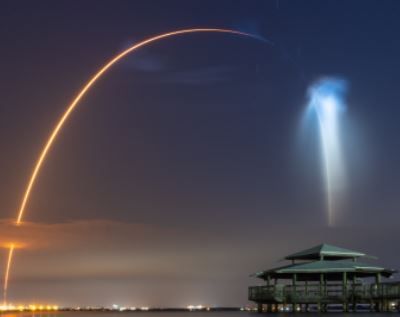Jellyfish are common along the Florida coast. But when the
Kennedy Space Center launched a rocket it was a unique sight for people.
Also Read: Four astronauts from SpaceX return home with midnight splashdown
On Friday, SpaceX’s morning launch generated a visual
phenomenon known as a “space jellyfish,” rewarding people who got up
early to see the Falcon 9 rocket’s launch with a striking spectacle which is an
ethereal cloud of illuminated gases, highlighted against the pre-dawn darkness.
The space jellyfish phenomenon happens when a rocket lifts
off in the hours around dawn or dusk. A spectator might be standing in total
darkness but as the craft reaches high altitudes, the sun’s rays illuminate the
plume of gases in its trail. The effect resembles a jellyfish medusa’s bell and
tentacles.
Also Read: A six-month sojourn: Astronaut team of 4 aboard space station heads back to earth
On Friday morning, people who woke up to see the rocket
launch witnessed the wonderful scene. As images posted online show, some
observers saw a horizontal streak of silver, while others saw what looked like
a billowing luminous cloud.
While the space jellyfish effect only evokes the animal,
actual jellyfish have also visited space. In 1991, NASA sent thousands of small
jellyfish into orbit aboard the Space Shuttle Columbia, to study how they react
to microgravity.
Also Read: James Webb Space Telescope finishes alignment, reaches final phase
This mission will mark SpaceX’s 45th for Starlink, a
constellation of more than 2,000 satellites in Earth orbit that beams internet
connectivity down to the surface for prices ranging from $99 to $499 a month.
SpaceX recently announced a partnership with Hawaiian Airlines, which will use
the service to offer free in-flight internet to passengers.
Also Read: China’s space agency aims to track, attack asteroids heading towards Earth: Report
What is jellyfish?
It has a dome-shaped body which passed through the water. But
jellyfishes are not really fishes. So, it is also referred to as “jellies.”
Believe it or not, these roving creatures, with their umbrella shape and
hanging tentacles, are most closely related to corals.







